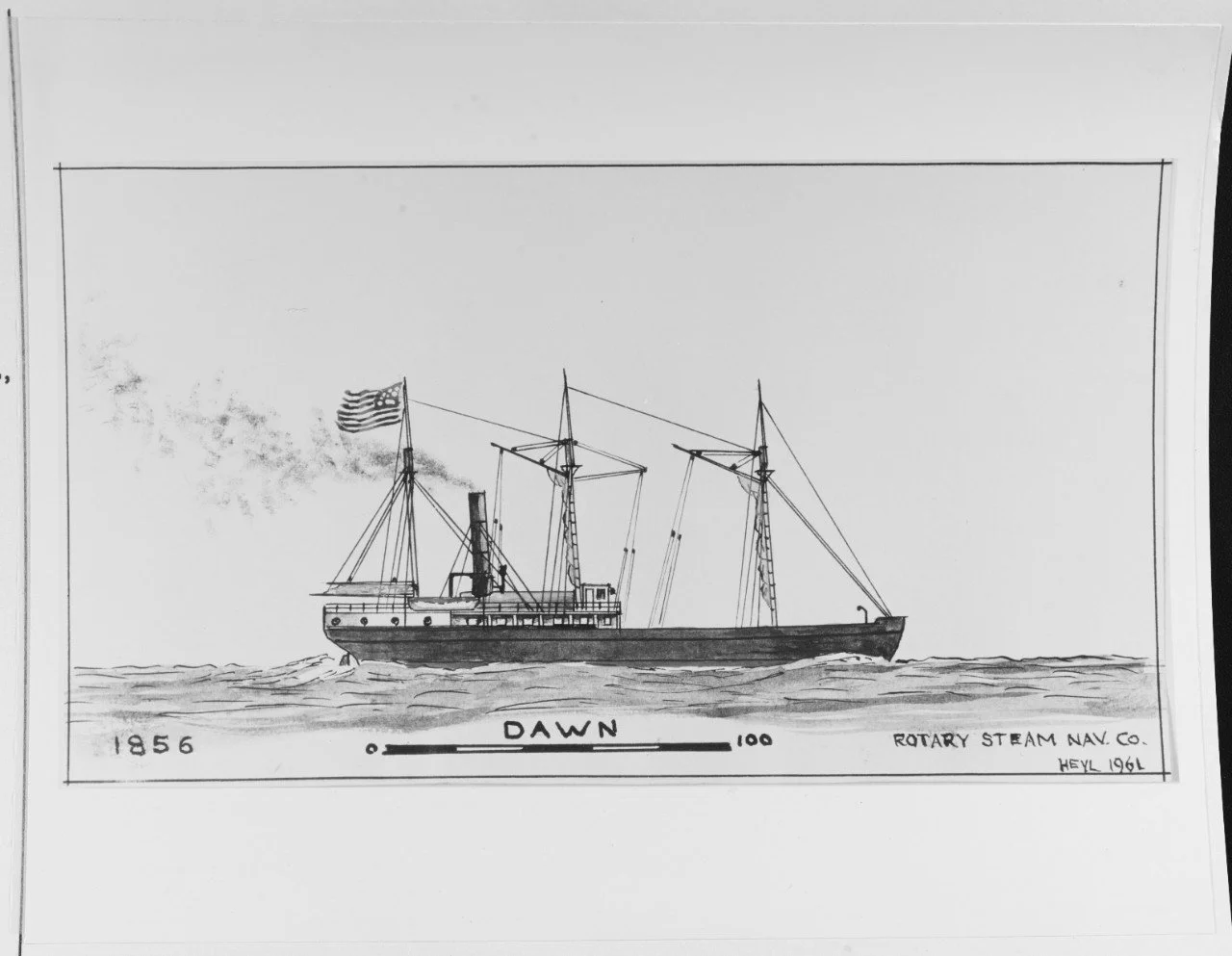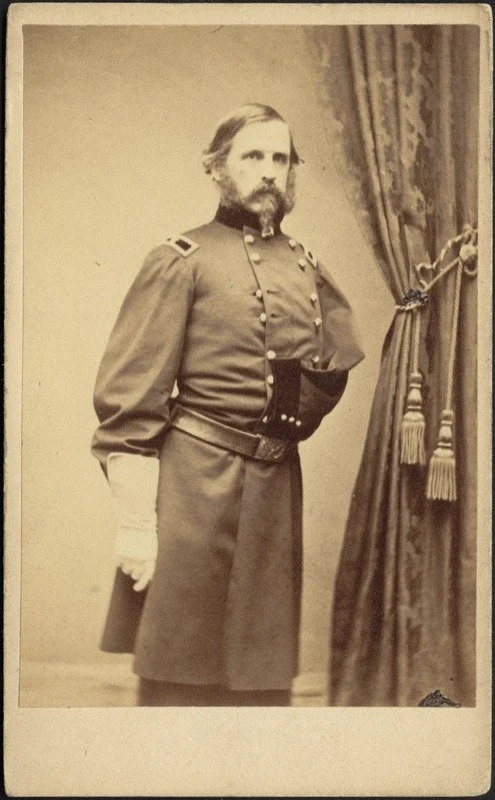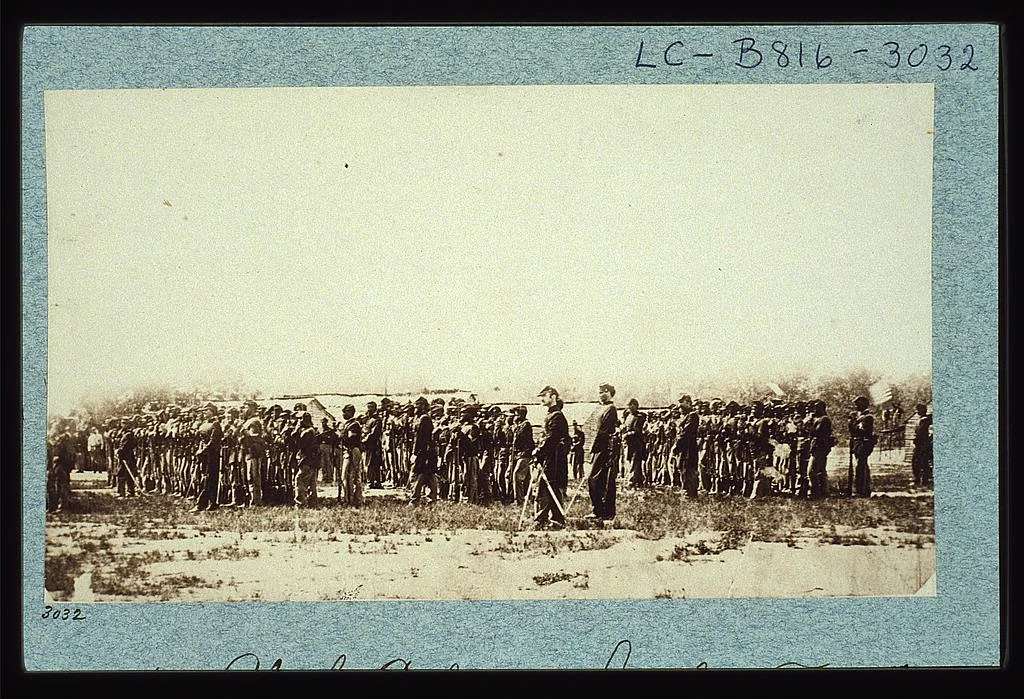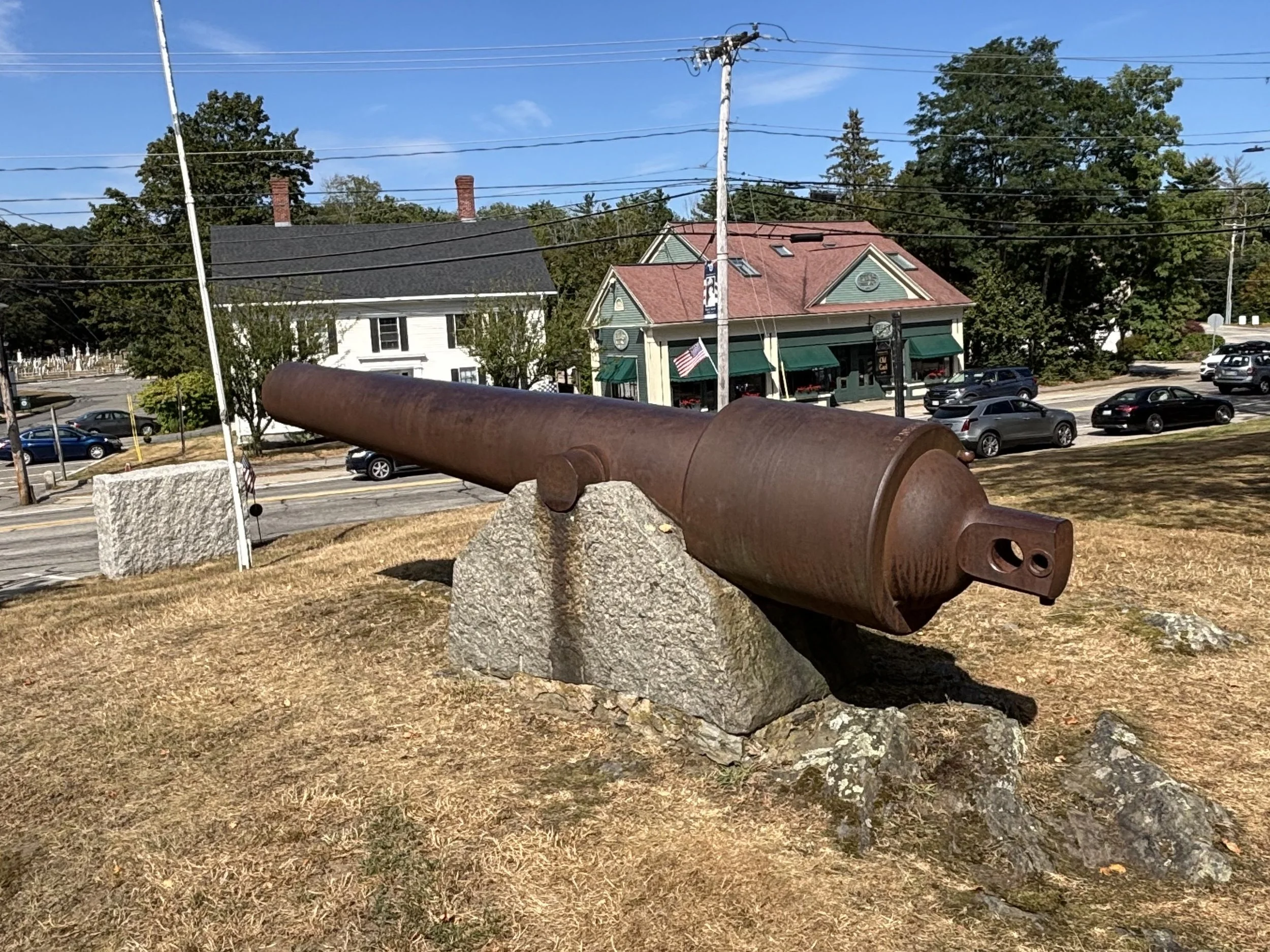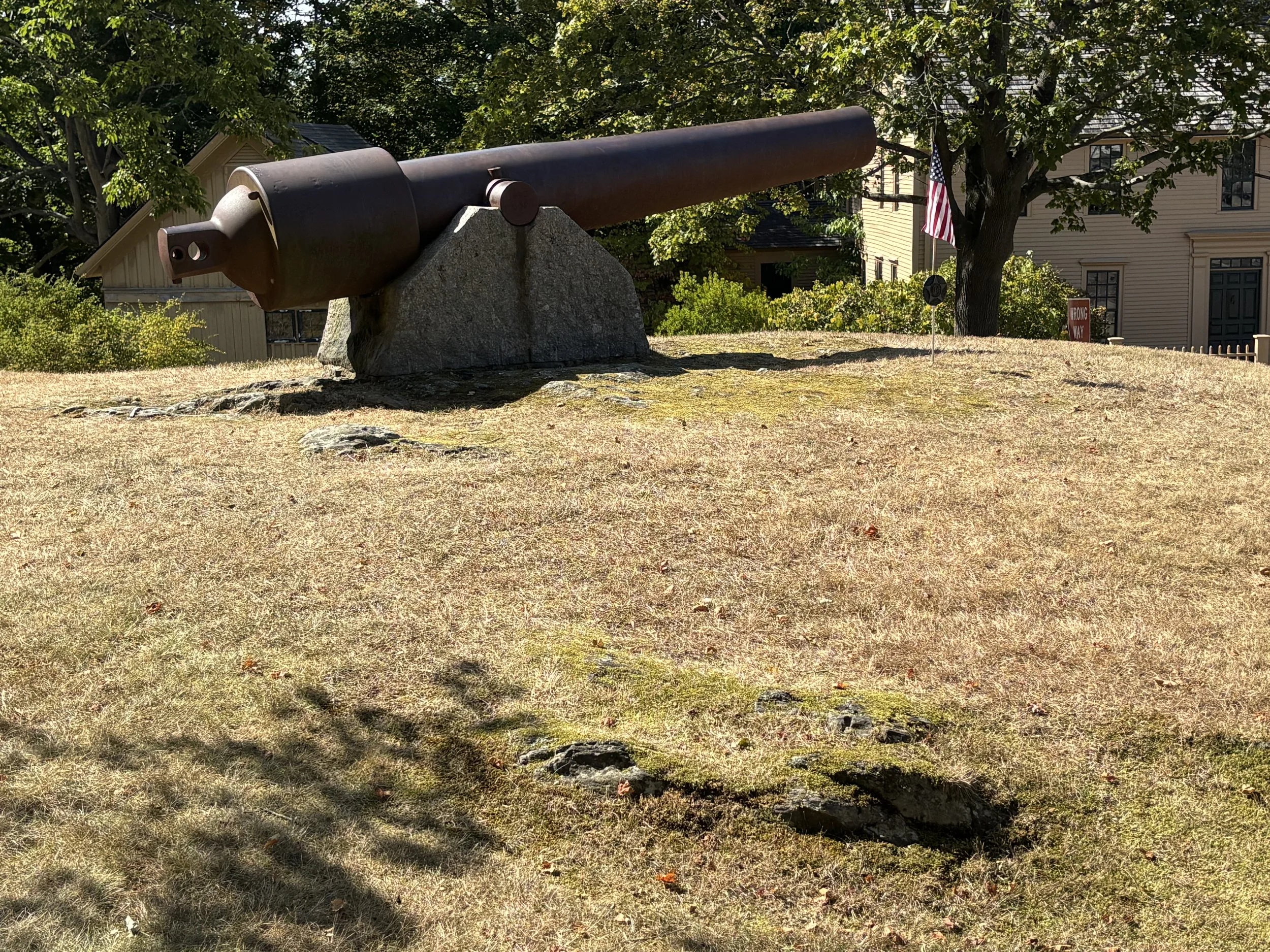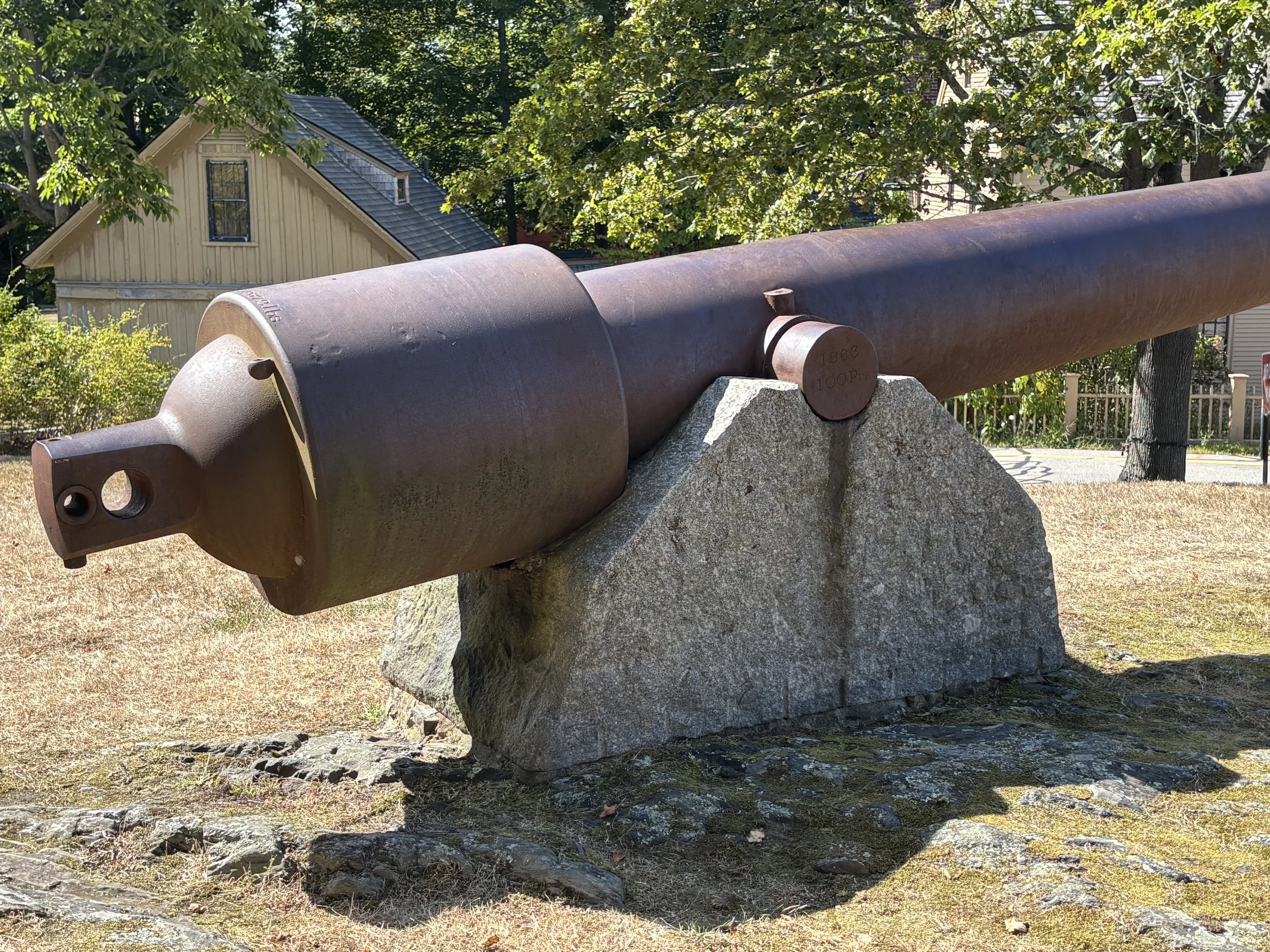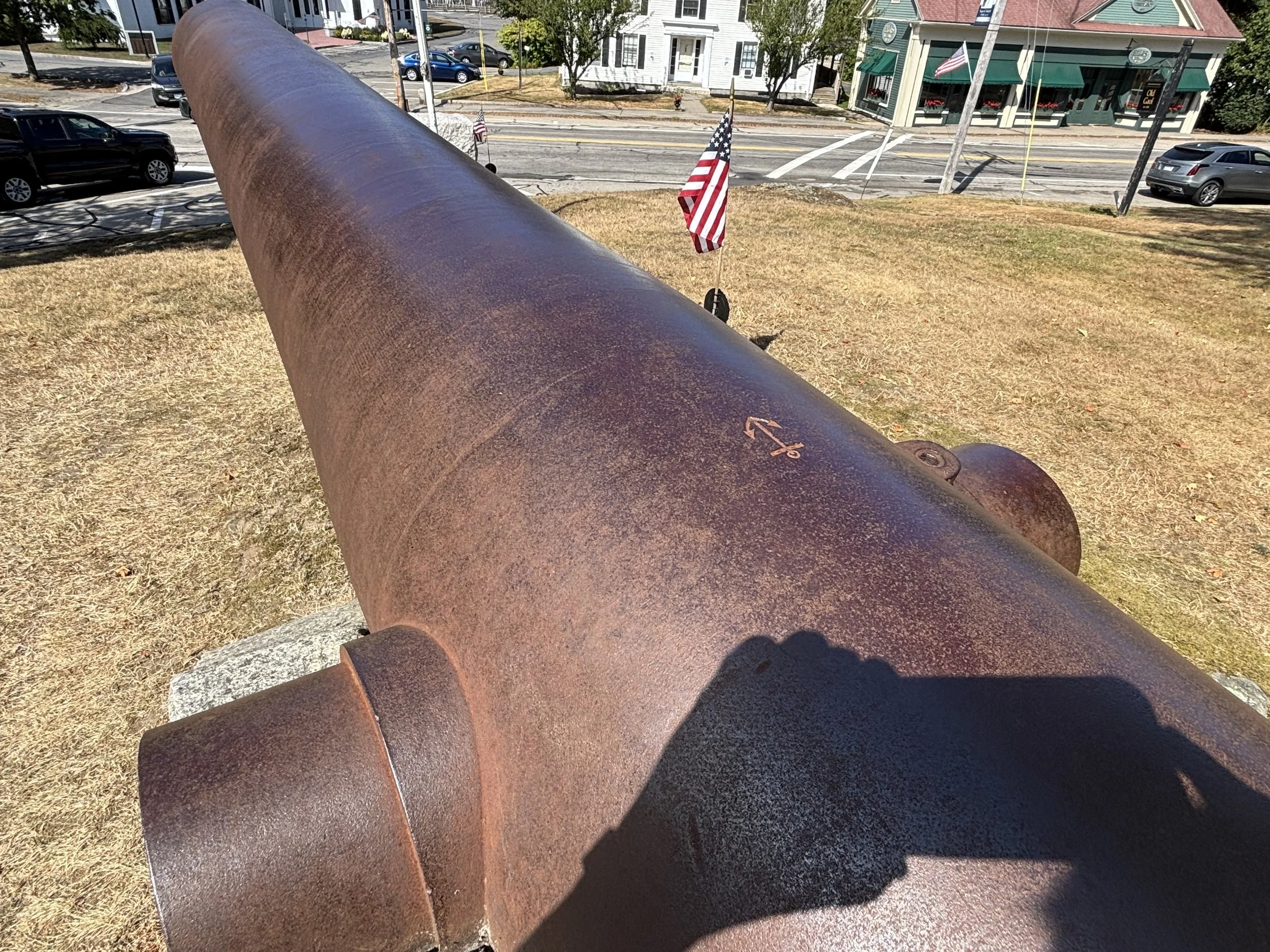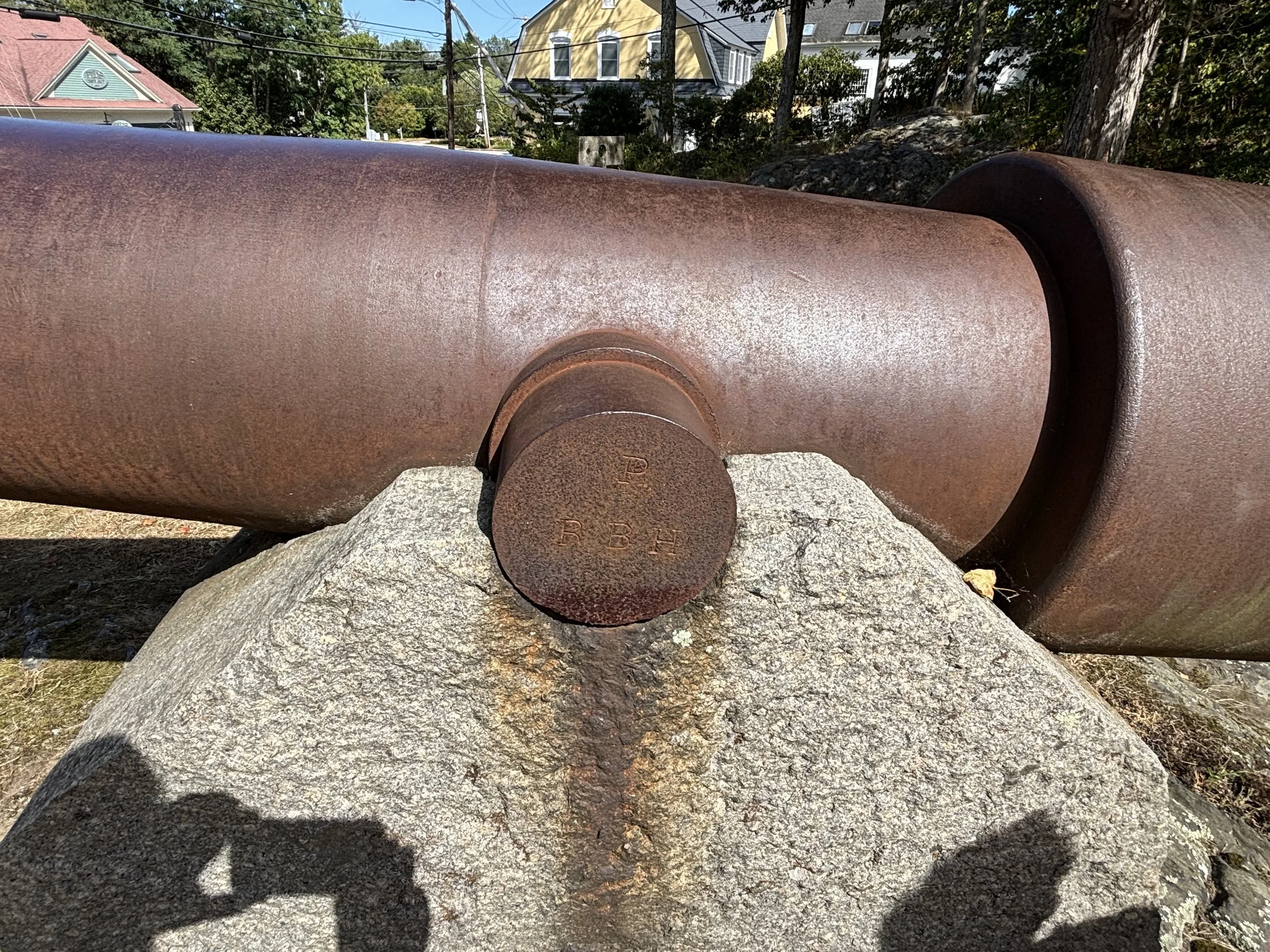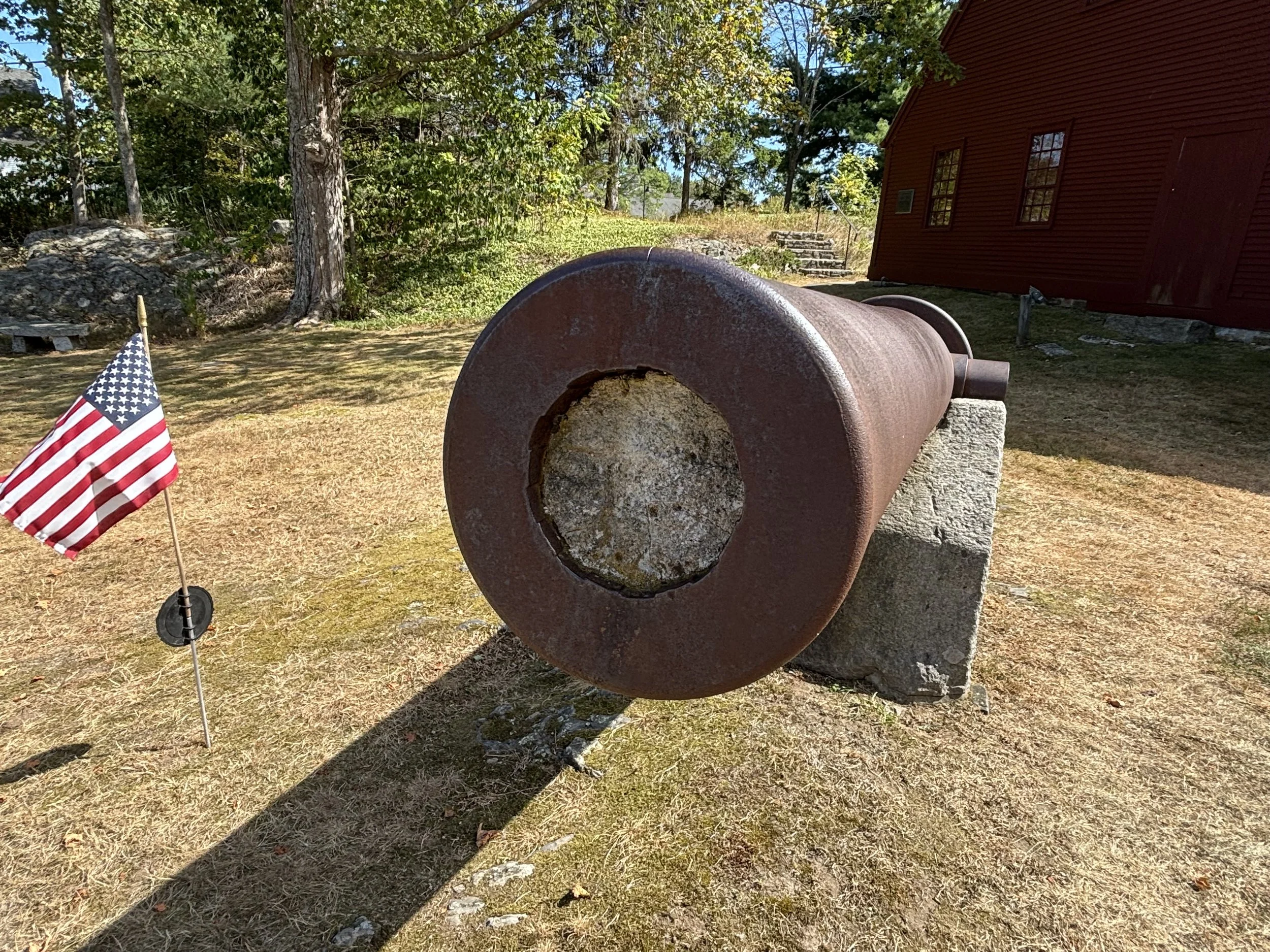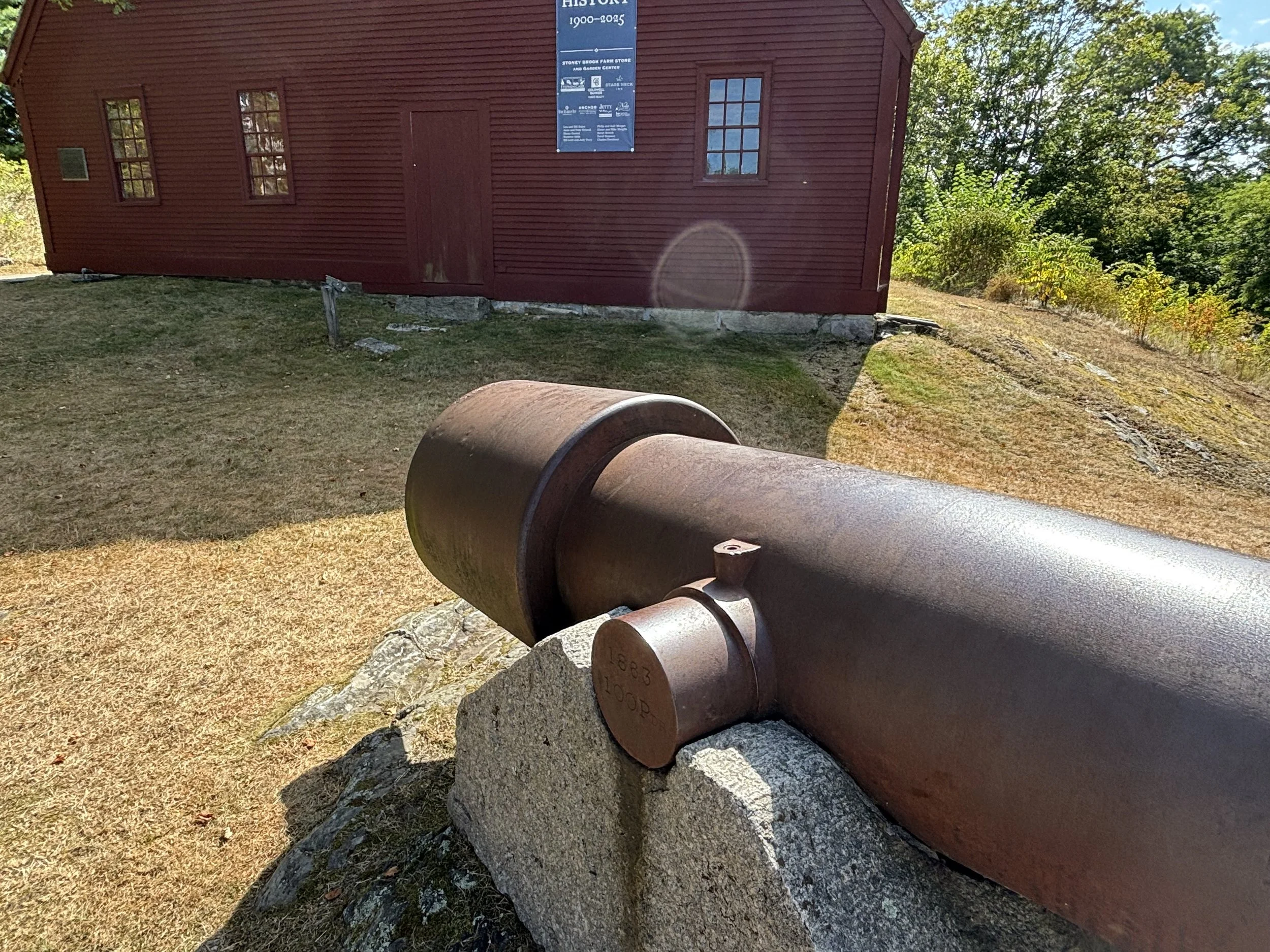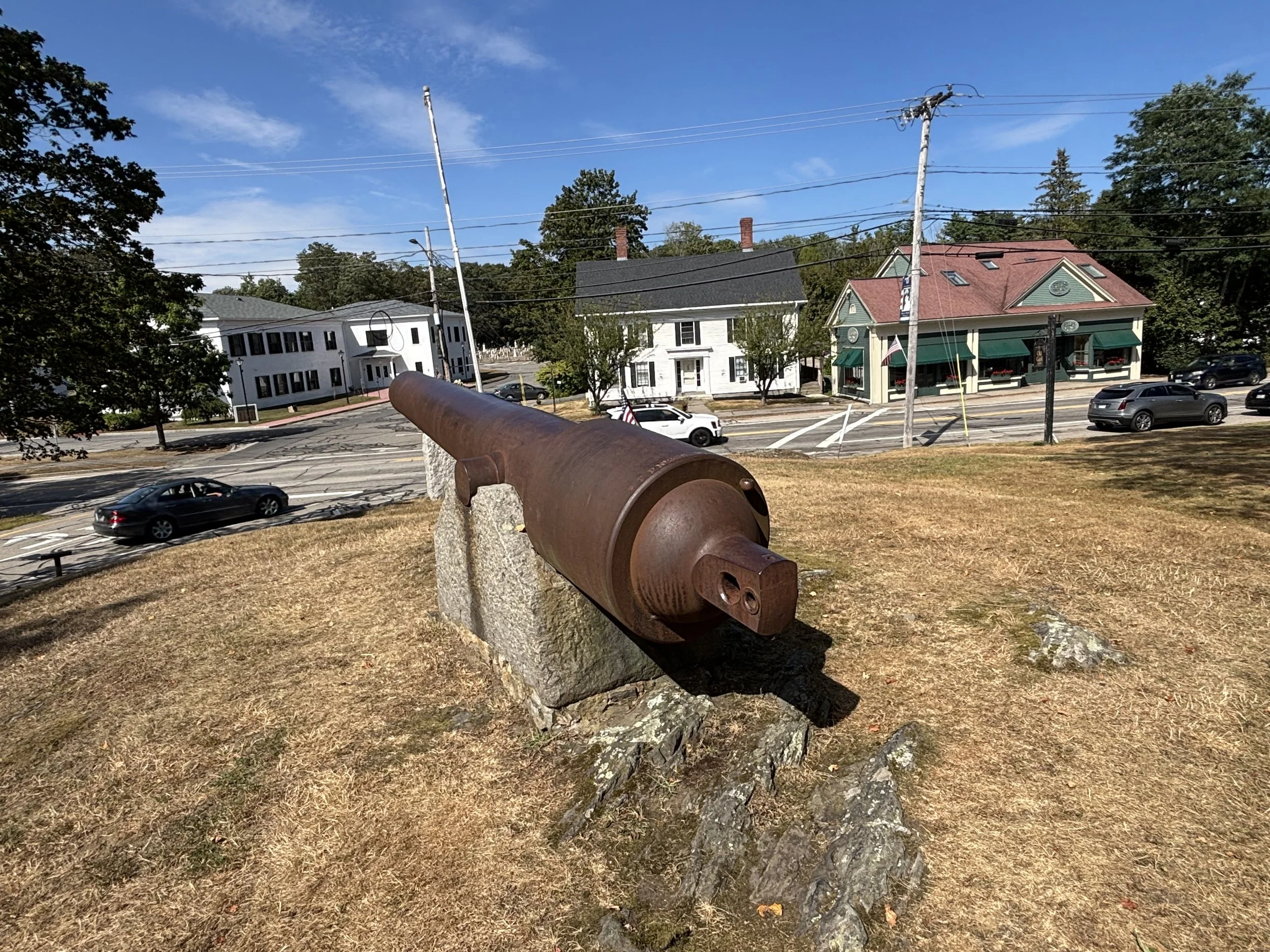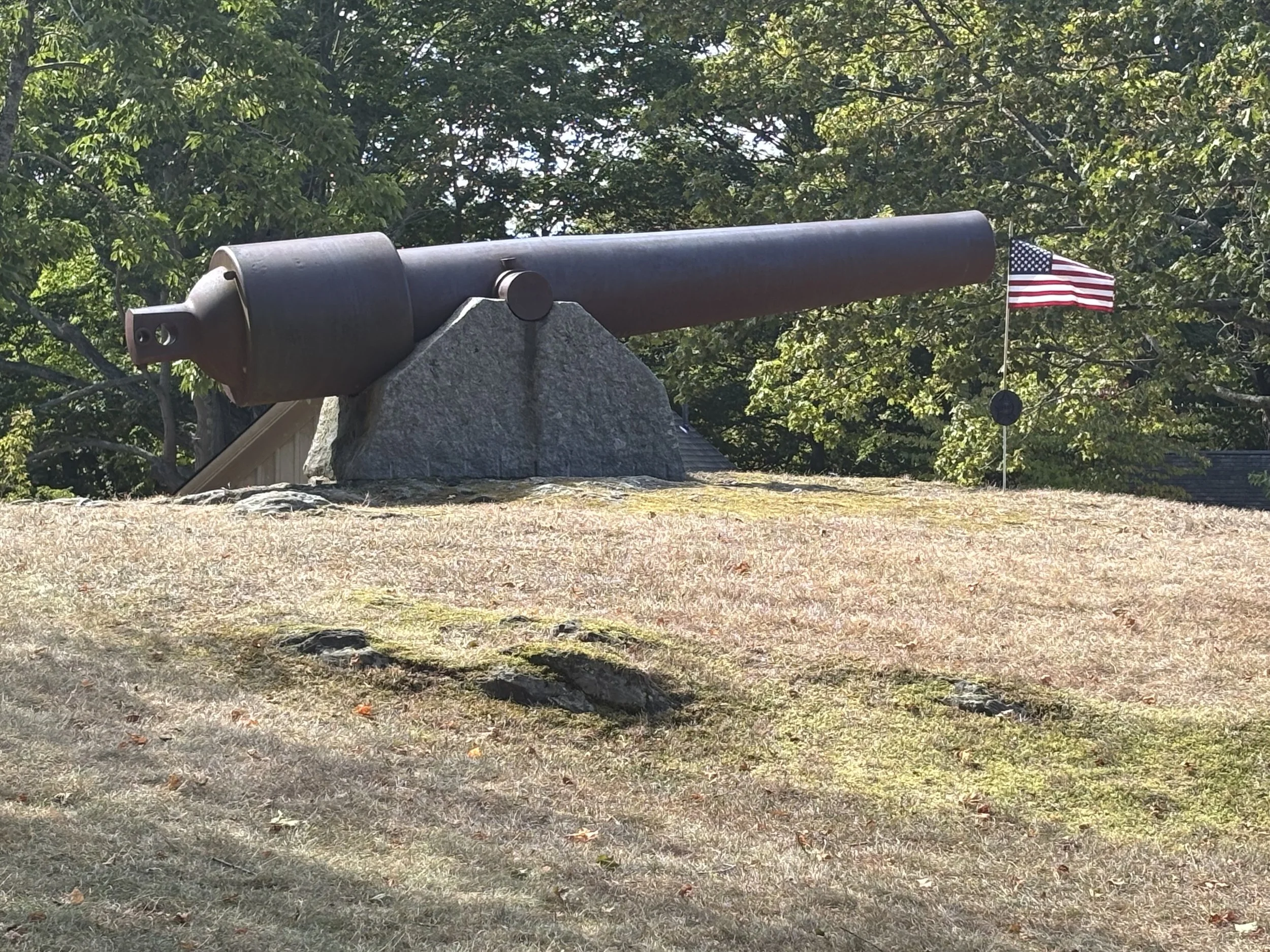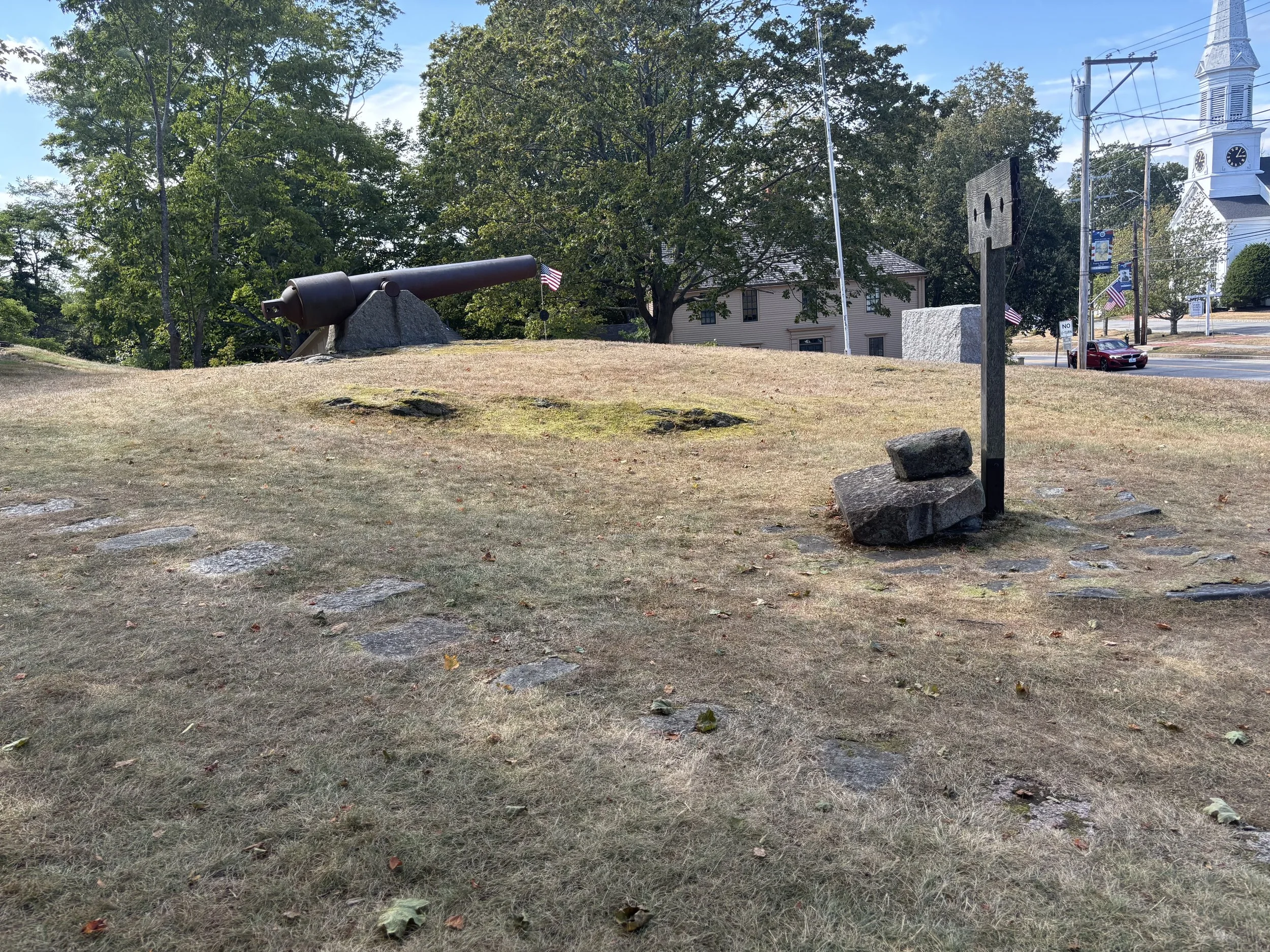The 100-Pounder Parrott Rifle of USS Dawn at York, Maine
US Navy 100-Pounder Parrott Rifle Number 206 at York, Maine
Many thanks to John Weaver for taking a detour to photograph Number 206 and share the photos. John is the author of A Legacy in Brick and Stone: American Coast Defense Forts of the Third System, 1816-1867. Available here.
A US Navy 100-Pounder Parrott Rifle, US Navy Registry Number 206, is displayed in front of the Old Gaol in York, Maine. Number 206 was cast at West Point Foundry in 1863. It’s weight as manufactured is 9,672 pounds. According to the research of Olmstead, Stark, and Tucker, Number 206 served aboard USS Dawn during the American Civil War (pg. 218). USS Dawn was a merchant steamer built in 1856/1857. It was taken into US Navy service in 1861. Initially armed with a main battery of two 32-Pounders of 57 Hundredweight and a 20-Pounder Parrott, the 32-Pounders were replaced with a single 100-Pounder Parrott in 1863 - likely the same Parrott now in York. Also according to Olmstead et al., USS Dawn’s 20-Pounder may be seen at Berwick, Maine.
USS Dawn and the Battle of Wilson’s Wharf
On May 24th, 1864, elements of three Confederate Cavalry brigades under the command of Major General Fitzhugh Lee attacked Fort Pocahontas at Wilson’s Wharf on the James River which was defended by the 1st United States Colored Troops and elements of the 10th USCT under Brigadier General Edward Wild, a homeopathic physician from Massachusetts who had served in the Ottoman Army during the Crimean War, volunteered as an infantry officer at the start of the Civil War, and had lost an arm at the Battle of South Mountain. Wild had assisted Colonel Shaw in finding officers for the 54th Massachusetts, and he had gone on to raise a brigade of African American troops, many in North Carolina. His operations in North Carolina made him notorious in the eyes of the Confederates.
Edward Wild - Photo from the Boston Public Library
The very presence of USCT soldiers and General Wild at Wilson’s Wharf goaded Confederate President Davis to act. According to Gordon C. Rhea, “There was no military reason to send Lee to Wilson’s Wharf. The enclave of black troops posed no immediate threat to Richmond, and the Army of Northern Virginia sorely needed its cavalry to fight Grant. Political considerations, however, prevailed over military ones” (Rhea, Gordon C. To the North Anna River, pg. 363).
After riding all night from Richmond, Fitzhugh Lee’s cavalry arrived at Wilson’s Wharf in the early morning of May, 24th. The cavalry dismounted and attacked the fort. Though his initial attack was unsuccessful, Fitzhugh Lee sent under a flag of truce a demand to the defenders of the fort surrender. The demand came with the promise that if the defenders promptly surrendered, they would be treated as prisoners of war. If they continued to resist, Fitzhugh Lee stated he could not be responsible for the consequences. The implied threat of death or enslavement, with the Battle of Fort Pillow in very recent memory, was noted, but Wild refused to surrender, and his men would fight. (Casstevens, Frances H. Edward A. Wild and the African Brigade in the Civil War, pg. 173).
The dismounted cavalry again charged the fort. The outnumbered defenders of the United States Colored Troops maintained a vigorous fire and held their posts. The gunboat USS Dawn bombarded the attackers as well. Rhea quotes soldiers describing the big 100-Pounder shells as looking like “turkey gobblers flying over” or “as great black masses, as big as nail kegs, hurtling in the air and making the earth tremble under us and the atmosphere jar and quake around us when they burst” (Rhea, pg. 365). The Confederate troopers retired under heavy fire, having taken some 200 casualties. Their attack defeated, they withdrew from the area.
General Wild would write, “The gunboat Dawn (Captain Simmons, Executive Officer Jackaway) rendered most efficient and material aid in shelling the enemy on both flanks, changing her position according to need. They have received my heartfelt thanks.” (Official Records. Ser. 1. Vol. 36. Pt. 2. Pg. 271).
1st United States Colored Troops in formation for review. Library of Congress: https://www.loc.gov/item/2004673345/
The commander of USS Dawn reported:
Report of Acting Volunteer Lieutenant Simmons, U. S. Navy, commanding U. S. S. Dawn.
U.S. S. DAWN,
Off Wilson's Wharf, May 25, 1864.
SIR: I have the honor to report that at 1:30 p. m. yesterday, the 24th, the United States forces under General Wild, at this point, were very suddenly attacked by the enemy in heavy force under General Fitzhugh Lee. On hearing the alarm, I at once got underway and commenced shelling the woods on our left flank.
The enemy got possession of a small piece of woods above the fortification and the transport steamer Mayflower coming by at the time, they opened a galling fire of musketry on the Mayflower and this vessel, badly wounding the captain and pilot of the transport. I at once opened on the woods and succeeded in driving them out.
The firing having almost ceased on our left and increased on our right flank, altered the position of this vessel, and commenced shelling the enemy just as they were making a charge, which drove them back, and, as General Wild tells me, thus ended a sharp action of five and a half hours.
I very respectfully report that if I had two 32-pounders in addition to my present battery, I could do much more service, having now no smoothbore guns to throw grape and canister. The bolts and ports are already on the vessel ready to put the extra guns in position at once, this vessel having carried them on the last cruise in addition to her present battery, and she can carry them now with ease. My ammunition is very nearly out, and I am anxious to get a supply as soon as possible, as I have only 17 rounds remaining, and herewith I send requisition for your approval.
The officers and crew behaved finely, Acting Ensigns William B. Avery, E. T. Sears, and P. W. Morgan serving their different guns with great coolness and energy, although the enemy's sharpshooters were throwing musket shot over and at us continually. I take great pleasure in reporting to you the noble and gallant conduct of my executive officer, Acting Master J. A. Jackaway, in shifting my position to follow the enemy. This vessel got very near a shoal in the river and was compelled to turn by backing for the purpose of getting my guns to bear on the sharpshooters, who were completely showering us with musketry. Mr. Jackaway did the duties of pilot, thus getting the vessel in position, and eventually driving the enemy away and saving that flank of our troops. I do think he deserves promotion if noble and gallant conduct and strict attention to duty merit such a reward.
I am happy to report no casualties on board. I annex a report of ammunition expended during the action.
I am, sir, very respectfully, your obedient servant,
J. W. SIMMONS,
Acting Volunteer Lieutenant, Commanding Dawn.
Report of ammunition expended.
100-pounder rifle: 46 rounds percussion shell.
20-pounder rifle: 34 rounds percussion shell, 1 10-second shell.
Rifled 12-pounder howitzer: 11 rounds percussion shell, 21 rounds
5-second shell, 3 rounds canister, 2 rounds grape.
Making in all 118 rounds expended.
I am, sir, very respectfully, your obedient servant,
J. W. SIMMONS,
(Official Records - Navies. Ser. 1. Vol. 10. pp 90-91.)
Dutch Gap, Virginia. Picket station of Colored troops near Dutch Gap Canal - Library of Congress https://www.loc.gov/item/2018670817/
The Breech of 100-Pounder Parrott Number 206. “R.P.P” stands for Robert Parker Parrott.
The Breech of 100-Pounder Parrott Number 206 showing the weight of 9,672 pounds.
The right trunnion of 100-Pounder Number 206
A 100-Pounder Parrott Rifle aboard USS Mendota on the James River. USS Dawn’s mounting of Number 206 may have looked like this. Library of Congress photo: https://www.loc.gov/item/91787359/
A 100-Pounder shell recovered at Fort Anderson in North Carolina. This shell weighed 92 pounds when filled. It is similar to the forty-six shells fired by USS Dawn’s 100-Pounder at the Battle of Wilson’s Wharf.
Additional Photos of 100-Pounder Number 206
The Old York Gaol, York, Maine and USN 100-Pounder Number 206. By Kenneth C. Zirkel - Own work, CC BY-SA 4.0, https://commons.wikimedia.org/w/index.php?curid=59423780
